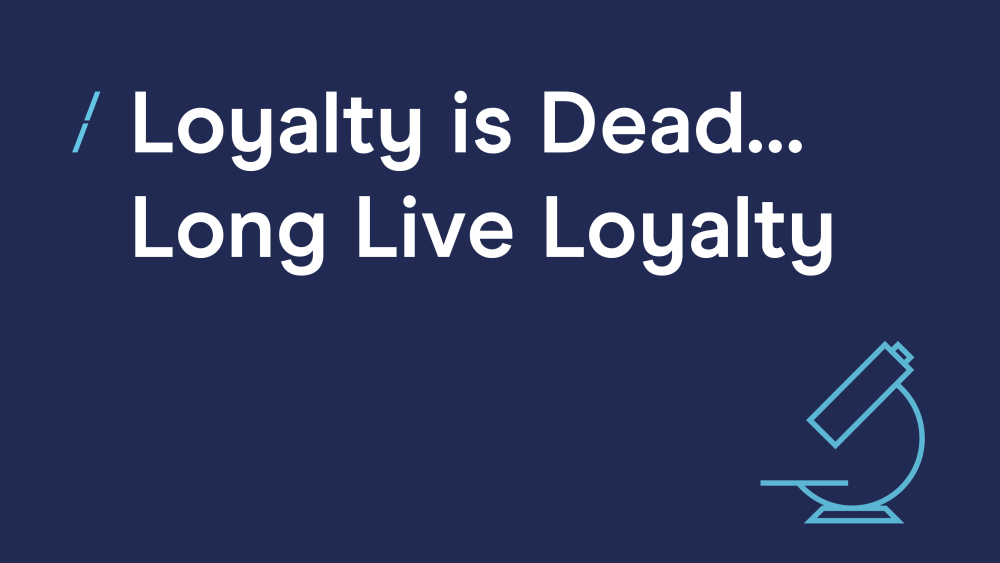Loyalty is Dead...Long Live Loyalty
12 Jul 2019

The demise, or at least erosion, of customer loyalty is something I have seen increasingly discussed by many industry commentators. Claims are usually around a generational shift of modern consumers, meaning that the idea of brand loyalty has lost its relevance with ‘Millennials’ constantly switching up their brand choices.
To be clear: I don’t personally believe this is true. However, the impetus for writing this article came from a response from Kantar’s Global Head of Customer Experience Dr Susanne O’Gorman.
In the piece, she recounts the experience of waiting for her train to work, which was 30 minutes late and showed no sign of arriving. She was left wondering where the train was, whether she will make it to the office, and ultimately, how she was stuck and had no alternative but to wait. This moment sparked a thought in her mind: “No, the real reason for customer churn is simply that many brands today don’t provide a customer experience that makes people stay with them.”
The idea that there has been a shift in consumer expectations is not in dispute here, but I believe that we are looking at an evolution, rather than a revolution.
Those claiming the end of ‘loyalty’ as a concept are looking at the problem from the wrong perspective. Indeed, it’s not just about retaining existing customers anymore – it’s about building experiences and engaging them in a truly customer-centric way.
Kantar’s recent report into customer experience focused on French banks, and showed that less than half of all customers felt they received relevant advice and information from their banks. And just one third felt appreciated as a customer. Ultimately, one in six (16%) said they were delighted with the last interaction.
According to the DMA’s latest ‘How to win trust and loyalty’ report, only once the so-called ‘functional drivers’ for loyalty have been delivered can brands start to consider using emotion-led drivers to solidify the relationship with their customer. These functional elements refer to customer perception of interfaces being easy to use; the company and services being reliable; keep quality high, and creating convenient and personalised experiences.
Dr O’Gorman points out that the more appropriate question should be about what brands need to do to make customers stay, spend more, and recommend the brand to their friends/family.
To that end, our report ‘Referral Marketing: Are You Creating Customer Advocates?’ explores the power of trying to attract customers through recommendations and referrals, revealing that referred customers are more willing to spend more often and more likely to continue to recommend your brand.
The key to building loyalty is in creating experiences that put your customers first, engaging them in the ways that they want, and understanding the things they like.
As Dr O’Gorman sums it up: “The times of simply delivering what is expected have long gone. In an age of experience, we need to do more than just meet needs – and that is real generational shift happening right now.”
Discover more about the DMA’s Customer Engagement campaign here.


1.png)


Please login to comment.
Comments